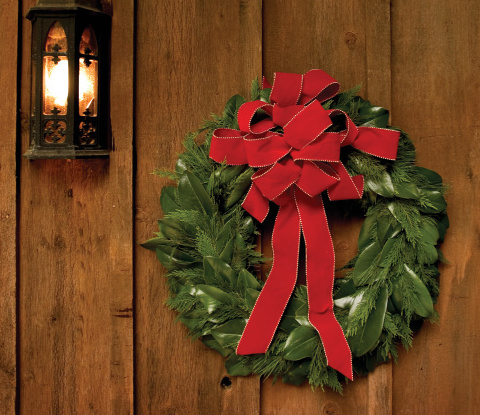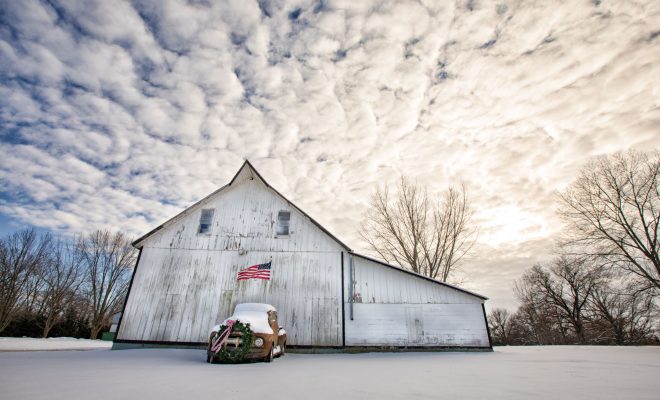Why You Should Make Your Own Holiday Wreath
By Andrew Holsinger |
Decorative wreaths are a popular favorite during the holiday season. A holiday wreath adds color, interest, and a festive focal point inside or outside your home.
“A wreath can be made from a variety of fresh greenery,” says Andrew Holsinger, a University of Illinois Extension horticulture educator. “Some of the plant material used for your wreath may even be found in your own landscape.”
When creating a holiday wreath with fresh plant material, remember that gathering the live material is actually pruning the plant, and proper cutting techniques are necessary. Be sure to distribute the cuts evenly around the plant to preserve its natural form and beauty.
“Pines, firs, and cedars hold up well for indoor uses,” Holsinger says. “Just like Christmas trees, these evergreen materials will dry out slowly over time.” A wreath placed outdoors may last for several weeks and those with many broadleaf evergreens actually will last longer if used outdoors. A few nice, needled choices for outdoor wreaths are spruces or hemlock.
Don’t be disappointed if you don’t have the selection of plant material in your landscape, Holsinger says. Typically, many florists and garden centers have adequate supplies, but contact them as early as possible to find the best choices. A difficult growing season sometimes results in some shortages.

“Caution should be used when decorating with plant materials inside the home,” says Holsinger. “Poisonous berries can be found on yews, mistletoe, holly plants, and many others.”
The leaves of yew are particularly toxic. Keep all these plants out of the reach of children and pets. Never place fresh greenery near heat sources such as heat vents, space heaters, sunny windows, or open flames such as candles and fireplaces.
Proper care of plant material will keep your wreath looking great from the start. Holly branches will need protection from freezing temperatures after cutting, otherwise the leaves and berries may blacken. Use outer tips of branches since they are often the most visually appealing and offer the best uniformity in appearance.
Holsinger also provides some recommendations for the preservation and use of greenery.
“When selecting greenery from your landscape be sure to use sharp cutters and immediately put the cut ends into water until ready to use,” he says.
When preparing the cuttings, keep the greenery out of sunlight. Prepare the cuttings to be consistent lengths to arrange around the frame of the wreath.
Maintain balance in your wreath by using uniform bundles of plant material as you secure them to the wreath frame. In addition to green materials, use other plant materials to decorate your wreath. These add color and texture. Some popular choices are dried hydrangea blooms, pinecones, or reindeer moss.




